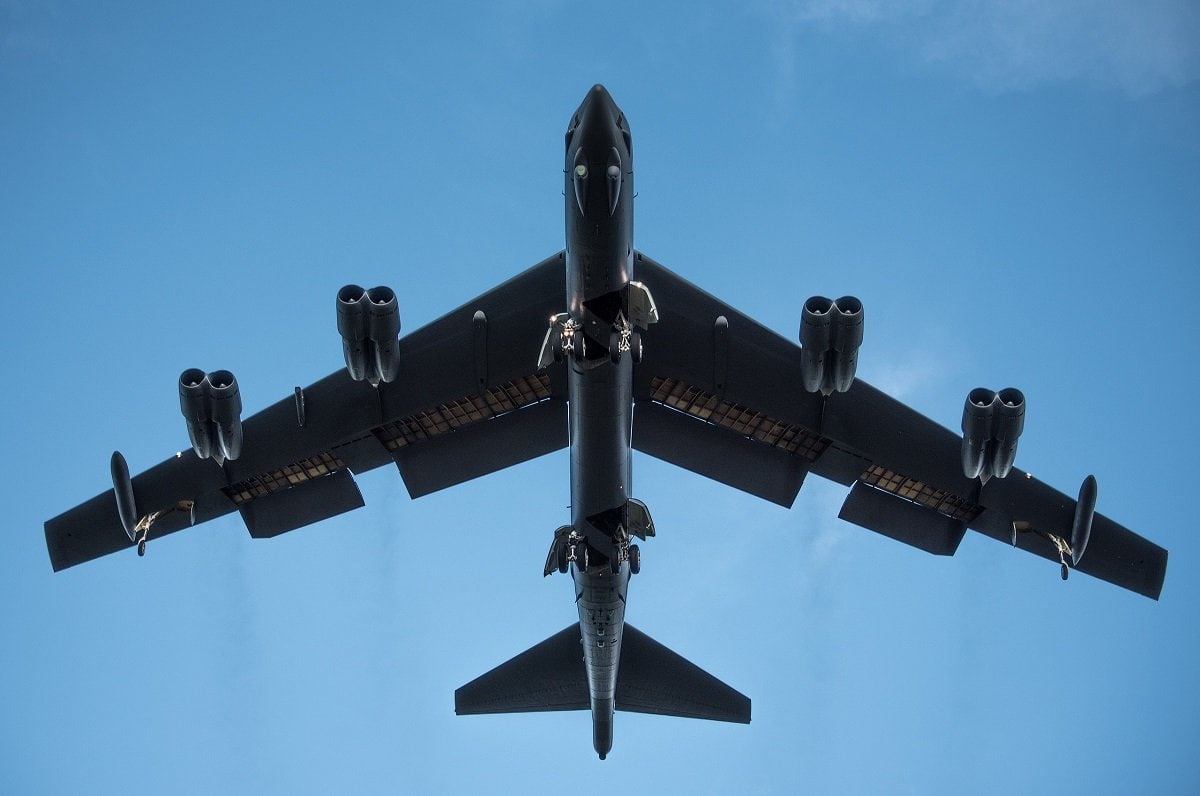The United States military has continued to conduct joint training exercises with allies and partners around the globe, and last week that included U.S. Air Force bomber sorties with escorts from the Japan Air Self-Defense Force and the Indonesian Air Force.
Last month, approximately 230 Airmen assigned to the 2nd and 307th Bomb Wings, Barksdale Air Force Base, Louisiana deployed with U.S. Air Force B-52 Stratofortresses and support equipment to the Indo-Pacific region to support Pacific Air Forces’ Bomber Task Force (BTF) deployment, the Air Force announced.
The deployment was in line with the National Defense Strategy’s objectives of strategic predictability and operational unpredictability. The BTF enables a mix of different types of bombers to operate forward in the Indo-Pacific region from a broad array of overseas and continental U.S. locations with greater operational resilience, and this case that the Cold War-era bombers were escorted last Tuesday with F-15 fighter jets from the JASDF, while a day later F-16s from Indonesia flew with the bombers. It was the first time Indonesian aircraft had integrated with the American B-52s Stars & Stripes reported.
Flying High With Regional Partners
Andersen Air Force Base, Guam has continued to act as a staging point for the B-52, allowing commanders to address a variety of global challenges through the engagement of the bomber. Additionally, the training and integration between the theater, allies, and other U.S. military units increases interoperability and readiness of U.S. Air Force Airmen, and the response abilities of the B-52, the Air Force explained.
“The BTF provides an opportunity to enhance readiness and give aircrews the necessary training to respond to any potential crisis or challenge across the globe,” said Lt. Col. Benjamin Poole, BTF director of operations.
“We fly bomber missions in the Indo-Pacific region to show our forces’ credibility while addressing a diverse, secured environment,” Poole added. “Through long range power projection, we are able to deter any potential adversaries and increase our strategic advantage in great power.”
The recent exercises highlight how the U.S. can work with regional partners to maintain stability in the Indo-Pacific region through conflict deterrence, and deliver rapid response capabilities anytime, anywhere.
“The B-52 is the most recognizable and respected aircraft in the world,” said Poole. “The United States continues to show that we can go anywhere on the globe on our timeline.”
Strategic Predictability and Operational Unpredictability
The United States Department of Defense (DoD) instituted its policy of strategic predictability and operational unpredictability as part of the 2018 National Defense Strategy.
“Be strategically predictable, but operationally unpredictable. Deterring or defeating long-term strategic competitors is a fundamentally different challenge than the regional adversaries that were the focus of previous strategies,” the NDS noted. “Our strength and integrated actions with allies will demonstrate our commitment to deterring aggression, but our dynamic force employment, military posture, and operations must introduce unpredictability to adversary decision-makers. With our allies and partners, we will challenge competitors by maneuvering them into unfavorable positions, frustrating their efforts, precluding their options while expanding our own, and forcing them to confront conflict under adverse conditions.”
Since last year, this policy has been front and center with the Air Force’s deployments of bombers to the Indo-Pacific Region. This has included sending a mix of B-52 and B-1 Lancer bombers to Anderson Air Force Base.
“We want to become more operationally unpredictable to adversaries,” said Poole. “In order to do so, we routinely exercise with our allies and partners through the employment of our bomber forces.”

A U.S. Air Force B-52H Stratofortress, assigned to the 20th Expeditionary Bomb Squadron, deployed from Barksdale Air Force Base, La., approaches the flightline at Royal Australian Air Force Base Darwin, Australia, April 6, 2018. Two U.S. Air Force bombers visited the base in Australia’s Northern Territory to support the U.S. Pacific Command’s Enhanced Air Cooperation initiative in cooperation with RAAF joint terminal attack controller teams. The EAC comprises a range of air exercises and training activities designed to enhance regional cooperation, coordination and interoperability between Australian and U.S. service members.
Peter Suciu is a Michigan-based writer who has contributed to more than four dozen magazines, newspapers and websites. He regularly writes about military small arms, and is the author of several books on military headgear including A Gallery of Military Headdress, which is available on Amazon.com.

